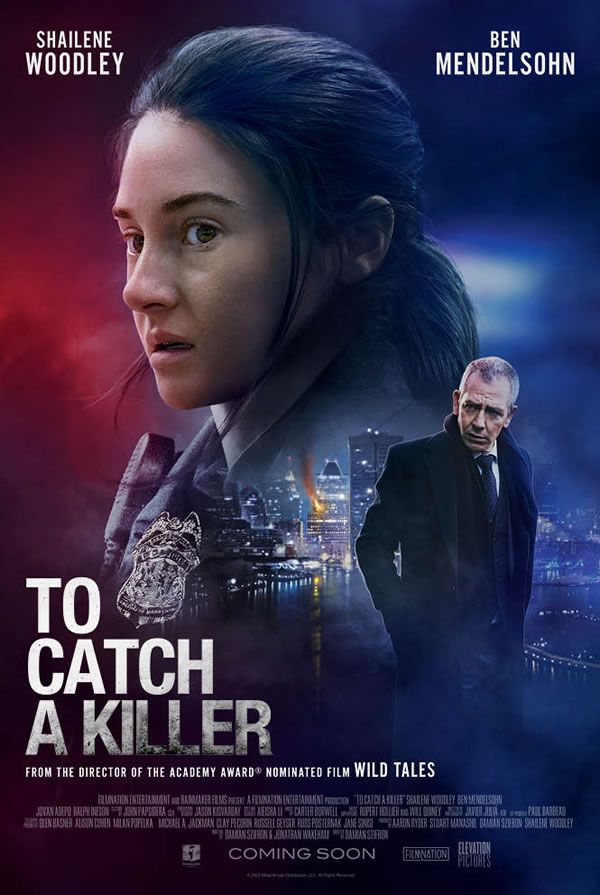08/03/2023
Review of "Misántropo" (To Catch a Killer) - A new revenge from Damián Szifron
“The planet is a damn prison.” “You are entertainment and screen time.”
After going through this year's Cannes Film Festival as one of the jury members of the competition for the Palme d'Or, we now have the latest film from Argentine filmmaker Damián Szifron hitting the screens, his first produced in the English language.
"To Catch a Killer," titled "Misantropo" in Spanish, is a story where the director revisits the theme of revenge, which he previously explored in his unforgettable anthology of black comedy, "Wild Tales."
In a conversation with the festival, he talked about this new feature film, written by himself, and how much he enjoys creating stories about revenge, a very human and taboo feeling. "It's a topic I like, something taboo... I feel that cinema has a capacity, both for those who make it and for the audience, almost like exorcism, a cathartic response, whether through laughter, tears, tension, or emotion."

"To Catch a Killer" follows Eleanor, a young woman who seemingly lacks the skills to work as a police officer and has been rejected to continue her career in the FBI. Her resume reveals ghosts from the past that she has transferred to her work. A new opportunity arises when, on New Year's celebrations, the city suffers a brutal attack that claims the lives of 29 victims. She is among the first to arrive at the crime scene, and her instinctive decisions catch the attention of the FBI chief in charge of the investigation to catch the man who committed the crime without leaving any trace. It is precisely these internal struggles that make Eleanor a gateway to trying to uncover the psyche of the killer and catch him. Amidst the pursuit, the man will have the opportunity to continue ruthlessly committing more crimes, demonstrating that he is an unpredictable and disturbed mind, a serial killer.

Szifron commented that there is a difference between the revenge in "Wild Tales" and the one seen in this movie because in the former, revenge was closer to the viewer's everyday life, while in this one, it leans towards a kind of biblical vengeance. "It's the unleashed fury against a species," he said. However, one thing these two productions have in common is the construction of a script where the characters triggering that revenge have specific motivations that are justified. More coincidences lie in the fact that these motivations are rooted in the oppressive system that governs us, which oppresses and suffocates the citizen, without falling into apologizing for crime.
In "Wild Tales," it was a series of small revenges, scattered motivations. In "To Catch a Killer," the focus is on a single complex and well-elaborated character who exercises it, an outsider with a difficult childhood who developed misanthropy as he felt that the world was not right, that he didn't fit into a superficial society that doesn't even allow contemplating the stars peacefully, in a space where people surrendered to capitalism and accepted hyper-surveillance, among other things.

This is one of those movies that you have to be patient with to reach conclusions since Szifron holds on to its climax as much as possible, generating a tension and dosed intrigue that seems not to evolve much until it overflows into an outstanding critique, with good barbs and some memorable lines, which occurs in the long-awaited and extended encounter between the timid police officer and the sarcastic killer, whose conversation makes a small reference to Clarice Starling and the executioner and psychopath Hannibal Lecter in "The Silence of the Lambs." In this case, the role of the police officer is played by actress Shailene Woodley, who doesn't quite fully develop all the emotional weight her character carries (a real pity), while Ben Mendelsohn, as the FBI chief, and Ralph Ineson, as the villain, accompany her effortlessly. The visual effects also fall short.

Damián confessed that this film was a complicated, very intense, and challenging experience for him, something that becomes revealing when you watch it and get the feeling that he managed to make the movie he wanted, a story that flows, bears his signature, and where his freedom was respected, as a matter of fact, he edited it alone, something that few can boast in the big industry. So, for the Argentine director, this incursion into the American cinema, into big league entertainment, turned out not so bad.
Technical Details:
- Director: Damián Szifron
- Screenplay: Damián Szifron
- Duration: 119 minutes
- Producers: Aaron Ryder, Damián Szifron, Shailene Woodley
- Genre: Thriller
- Cast: Shailene Woodley, Ben Mendelsohn, Jovan Adepto, Ralph Ineson, Arthur Holden, Mark Camacho
- Editing: Damián Szifron
- Cinematography: Javier Juliá
- Music: Carter Burwell
- Country: United States
- Year: 2023
* Images courtesy: Elevation Pictures.
<< Go to Spanish version
